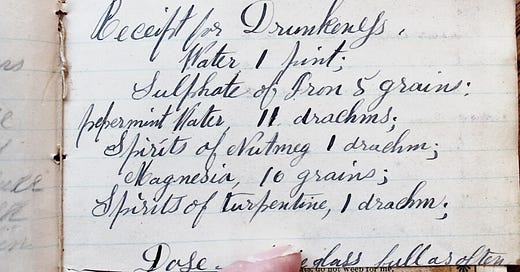I started farming in 1984. It took me at least 5 years before I felt like I knew anything about growing fruit, and another 5 after that before I felt comfortable creating spray programs. Along the way Integrated Pest Management (IPM) was a core part of my understanding and approach to managing orchard pests (insects, pathogens, and weeds). That is, understanding the dynamic nature of nature as well as the intricacies of the science are critical to how I do what I do - then and now. Part of the problem early on had to do with the indoctrination of an “us versus them” attitude towards orchard management in general and pest management specifically. They were the enemy and we need to go to war. But, as I wrote in my piece on Compassionate Farming, we need to approach nature not as enemy but as companion. In order to do so - and to effectively use IPM and not allow it to use us - we need to acknowledge the dynamic nature of orcharding and viticulture.
Every once in a while I get asked whether I enjoy what I do and more recently when I plan to retire. My answer is that the only reason to retire would be if I ceased enjoying what I do, or it became boring. But the fact is that every season, every week, every day, every grower, every crop, every nuance of every farm keeps my curiosity everlasting. A curiosity that leads to learning in a way that’s not just accumulation of knowledge, but the transformation of that knowledge into wisdom.
From time to time I get asked about providing spray recipes as if there is a rote method to determining exactly what everyone’s needs are. My pat response is that I don’t do recipes. There are a few fundamental steps and products that are used throughout the year. The specifics of their application, however, depends each grower’s specific situation. Anything that is promoted or reported to be one-size-fits-all, something that will work for everybody no matter where you are or how you approach what you do is fundamentally flawed before it’s even applied. Sure there are similarities amongst growers and regions and their situations but there is nothing about them that is the same. Recipes rarely work the same for each person - whether in cooking or farming.
First of all, generating a spray recipe or one-size-fits-all suggests a prophetic superpower to know what the growing season is going to be like just a days or weeks down the road. The truth is that the weather changes so constantly hope he loses me too. And since pest developmental models are tied to weather, pest pressures change as frequently as the forecast.
Second, each farm has its own personality, intelligence, and influence from the farmer. While the basics of how fruit grows may be the same from farm to farm, the realities and the practical implications of how fruit development presents itself can be very different across the very smalls regions. I need to understand and “feel” each farm before I can make any kind of reasoned assessment of what to do.
Then each farmer’s desires, objectives, resources, and capacity to farm must be taken into your account. Some growers I work with have the infrastructure to manage on an entirely different level from another grower that may not have the same set of resources.
IPM is not a static art and science. It is very much a dynamic practice that is not simply a path to a spray program, but rather a slow walk to being one with a farm, orchard, or vineyard, that starts with understanding the different life forms on many levels. The farm organism is a dynamic living being, one with a consciousness and energy all its own. A balanced farm is a healthy farm and this requires the farmer to be one with the world around them, not married to a calendar or schedule of events. That said, after 42 years (yikes!), I can say there are some very predictable ebbs and flows that only need a light massage depending on the specifics of each season - so creating a foundation of a spray program using dynamic IPM is useful. But IPM doesn’t need to mean going to war. Nature flows, so should you. Be like water.






